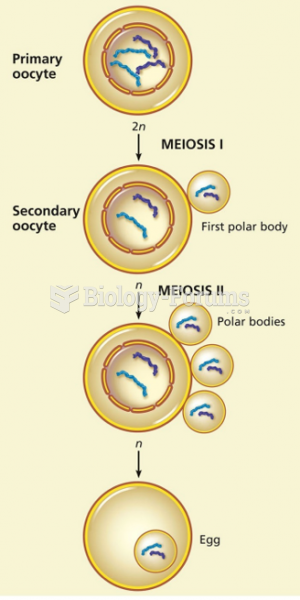|
|
|
Did you know?
Approximately 500,000 babies are born each year in the United States to teenage mothers.
Did you know?
The average adult has about 21 square feet of skin.
Did you know?
Autoimmune diseases occur when the immune system destroys its own healthy tissues. When this occurs, white blood cells cannot distinguish between pathogens and normal cells.
Did you know?
On average, the stomach produces 2 L of hydrochloric acid per day.
Did you know?
Vaccines prevent between 2.5 and 4 million deaths every year.







